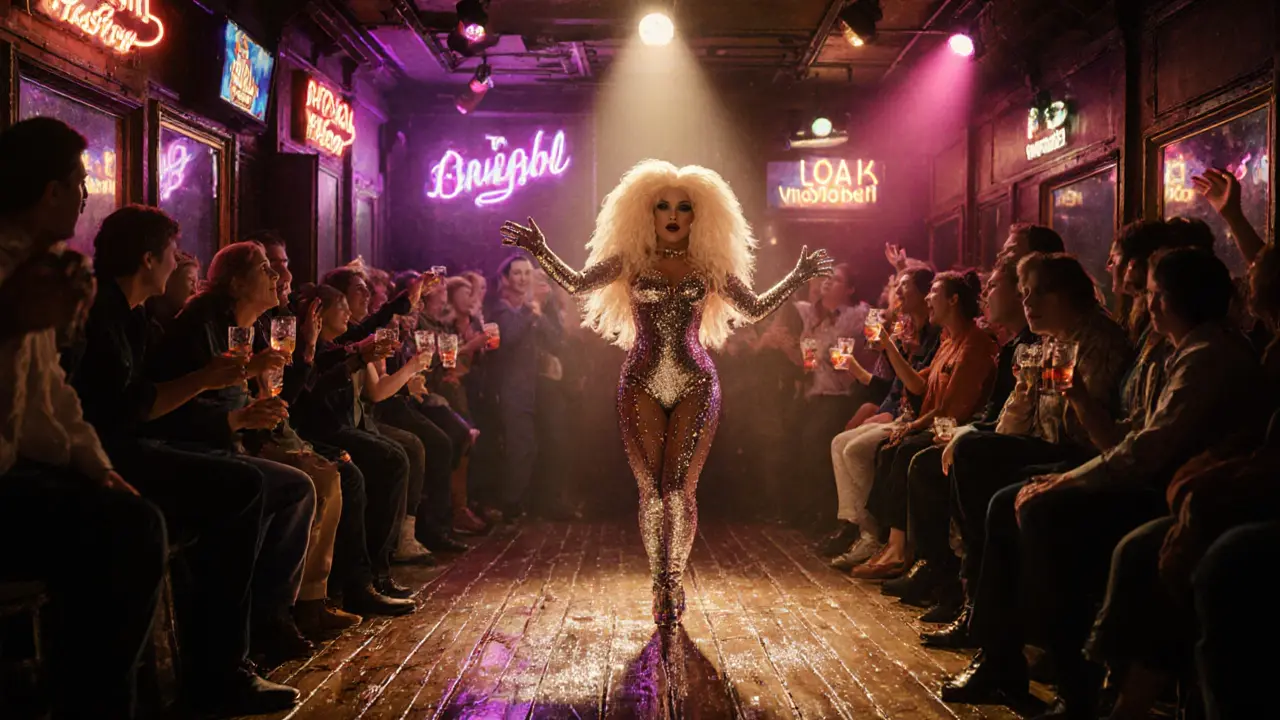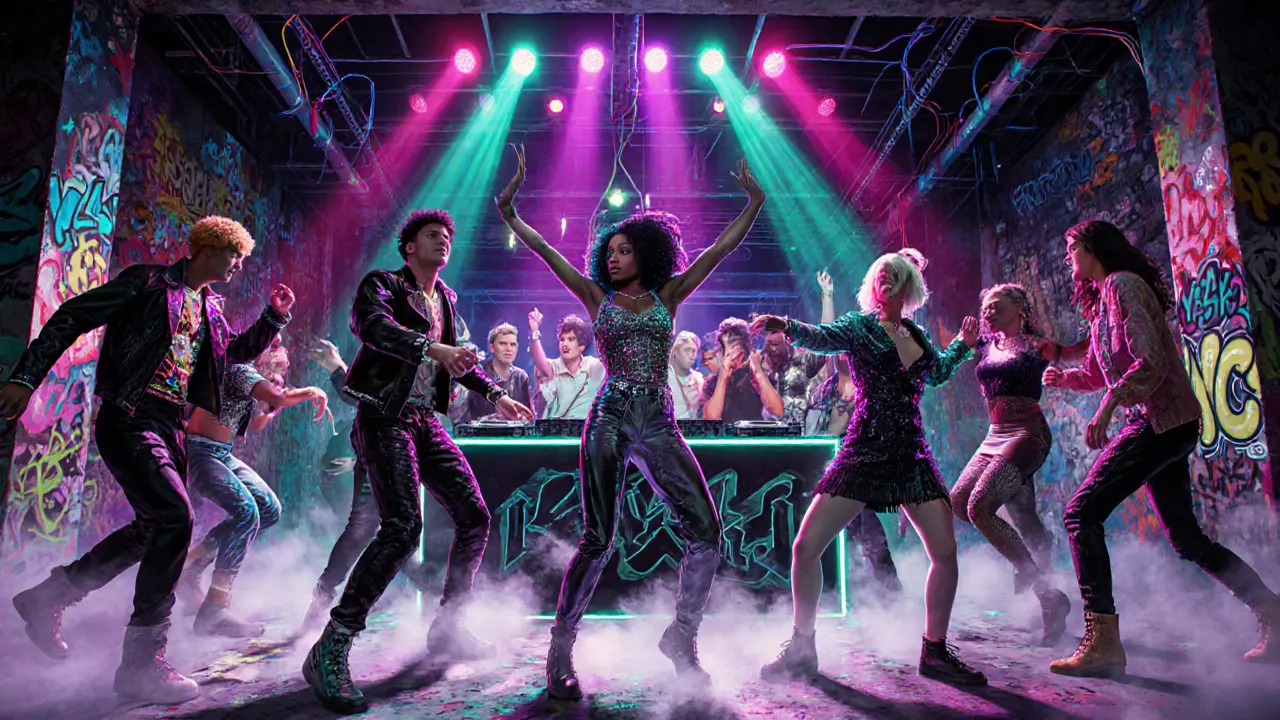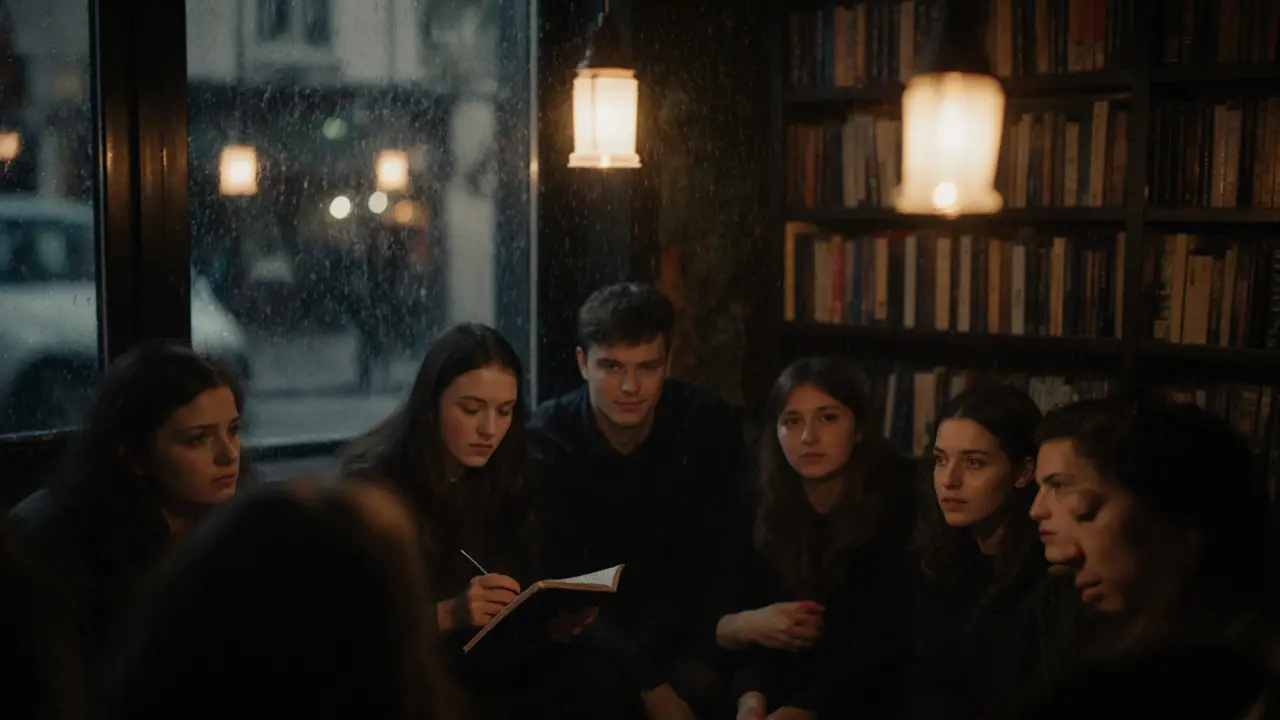
London doesn’t just have LGBTQ+ nightlife-it has a living, breathing culture that pulses through alleyways, basement clubs, and rooftop bars. If you’re looking for where the real energy is, it’s not in tourist brochures. It’s in the sticky floors of a Soho pub where strangers become friends by 11 p.m., in the thunderous bass of a Dalston warehouse party, and in the glitter-dusted applause after a drag queen drops the final note of a Beyoncé cover. This isn’t about checking boxes. It’s about finding your people, your sound, your space.
Where It All Started: Soho
Soho is the heartbeat. It’s where the Stonewall riots in New York had their London echo in the 1970s, and where the city’s queer community carved out safety in the shadows of a less accepting world. Today, it’s still the most concentrated patch of LGBTQ+ nightlife in the UK.
The Royal Vauxhall Tavern isn’t just a pub-it’s a monument. Open since 1862, it became a refuge in the 1970s and now hosts weekly drag extravaganzas that sell out months in advance. The crowd? Mix of 80-year-old veterans and 20-year-olds seeing drag for the first time. The vibe? Unfiltered joy.
The George has been a gay pub staple since 1974. It’s not fancy. It’s got mismatched chairs, a jukebox that plays everything from Pet Shop Boys to Frank Ocean, and bartenders who remember your name-and your drink-on the first visit. If you want to feel like you’ve stepped into a London that hasn’t changed in 50 years, this is it.
Don’t skip Barbary, a hidden gem tucked behind a nondescript door. It’s a speakeasy-style bar with craft cocktails, dim lighting, and zero pretense. No one’s here to be seen. Everyone’s here to connect.
Dalston: The New Frontier
Move past Soho, and you’ll find London’s most experimental queer scene in Dalston. This isn’t about polished venues. It’s about raw creativity, underground parties, and spaces that don’t care if you’re gay, trans, non-binary, or just curious.
Wiltons Music Hall is a converted 18th-century building turned into a queer cabaret powerhouse. Their weekly Drag Brunch draws crowds from across Europe. The performers? A mix of West End stars and self-taught artists who’ve never been on TV. The drinks? Cheap. The energy? Electric.
Club Kali is the place for those who want to dance until dawn. It’s not a club in the traditional sense-it’s a collective. Hosted by queer artists and DJs, the nights are themed: one week it’s 90s rave, the next it’s hyperpop meets ballroom. The dress code? Whatever makes you feel powerful.
And if you’re into something quieter but still electric, Bar Out is a queer-owned café by day and a spoken word and poetry night spot by evening. It’s the kind of place where someone might read a poem about coming out to their parents-and the whole room holds their breath.
East London’s Hidden Gems
East London doesn’t scream for attention. It whispers. And if you listen, you’ll find some of the most intimate queer spaces in the city.
The Eagle in Shoreditch is a leather-and-denim haven. It’s been around since the 1980s and still has the original wooden booths, dim red lights, and a crowd that’s mostly men-but welcoming to all. It’s not a party spot. It’s a sanctuary. You come here to be seen, not to be stared at.
Queer East is a monthly film night at the Genesis Cinema. They screen indie queer films, documentaries, and short films from around the world. No alcohol, no loud music-just a room full of people who understand the power of a story told in silence.
And if you’re looking for something that feels like a secret, House of Sigh is a pop-up queer party held in a converted warehouse in Hackney. No website. No social media. You get the location via a coded text message if you’re on their mailing list. It’s the kind of place that feels like you’ve been let into a private club-because you have.

West End and Beyond: Inclusive Spaces
Not every queer night needs to be underground. Some of the most welcoming spaces are in the heart of the West End.
The Cross on Euston Road is a multi-level venue with a rooftop bar, a dance floor, and a drag show every Friday. It’s popular with tourists, but locals still flock here for the DJs who spin everything from house to Afrobeats. The crowd is diverse-age, gender, background-and that’s the point.
Bar 13 in Camden is a trans-led space. They host weekly Trans & Queer Open Mic nights where anyone can perform-singing, poetry, comedy, even stand-up about navigating healthcare systems. It’s not just entertainment. It’s activism with a beat.
And for those who want a quieter night out, Barbican’s Queer Cinema Club runs monthly screenings in the historic Barbican Centre. It’s elegant, calm, and full of people who love film as much as they love community.
What to Expect: Safety, Inclusion, and Real Talk
London’s LGBTQ+ nightlife is one of the safest in the world-but safety doesn’t mean no risks. Trans people still face harassment. Queer people of color still get overlooked at door policies. And while most venues are welcoming, not all are.
Here’s how to navigate it:
- Check the venue’s social media. If they post photos of diverse crowds, that’s a good sign.
- Look for venues that mention “all genders welcome” or “trans-inclusive” in their descriptions.
- Don’t assume a place is safe because it’s in Soho. Some bars still have bouncers who gatekeep.
- Use apps like Grindr or HER to find real-time recommendations from locals.
- If you’re visiting alone, let someone know where you’re going. Even in the safest cities, it’s smart.
The best part? Most venues in London have zero tolerance for discrimination. If you’re turned away for being queer, trans, or non-binary, report it. Many venues have direct lines to LGBTQ+ advocacy groups like Stonewall or Switchboard.

When to Go: Timing Matters
London’s queer scene doesn’t sleep-but it does shift.
- Wednesday nights are quiet but intimate. Perfect for meeting new people without the crush.
- Friday and Saturday are packed. Arrive before 10 p.m. if you want a seat at the bar.
- Sunday brunches are the secret weapon. Drag brunches at Wiltons or The George are legendary-and way less crowded than weekend nights.
- July is Pride Month. Every venue is packed. Book tickets early. But don’t go just for the parade. Go for the afterparties-those are where the magic really happens.
And if you’re visiting in November? You’re in luck. The city is quieter, the crowds are smaller, and the energy is more personal. It’s the best time to find your favorite spot without the noise.
Final Tip: Be the Change
The best LGBTQ+ nightlife isn’t just about where you go. It’s about how you show up.
Buy a round for the bar staff. Tip the drag performers. Say thank you. Don’t take photos without asking. Don’t assume someone’s identity. Ask questions, but listen more than you speak.
London’s queer spaces survived because people showed up-not just to party, but to protect each other. Be one of those people. Your presence matters more than you know.
Are London’s LGBTQ+ clubs safe for tourists?
Yes, most are. London has some of the most inclusive and well-regulated LGBTQ+ venues in the world. Bouncers are trained to spot discrimination, and many clubs have direct links to LGBTQ+ support groups. Still, always trust your gut. If something feels off, leave and report it.
Do I need to be LGBTQ+ to go to these venues?
No. Allies are welcome-especially if they’re respectful. The goal isn’t exclusion. It’s creating spaces where queer people feel safe. If you’re there to support, celebrate, and listen, you’ll be welcomed with open arms.
What’s the dress code for LGBTQ+ clubs in London?
There’s no universal rule. In Soho, jeans and a shirt are fine. In Dalston, glitter and fishnets are the norm. At The Eagle, leather and denim are expected. The best advice? Look at the venue’s Instagram. If you see people wearing bold outfits, go bold. If it’s casual, keep it simple.
Are there LGBTQ+ venues outside of central London?
Absolutely. Dalston, Hackney, and even places like Peckham and Croydon have thriving queer scenes. House of Sigh, Bar Out, and Queer East are all outside Soho-and often less crowded. The scene is spreading, not shrinking.
Is drag performance still popular in London?
More than ever. Drag is at the heart of London’s queer nightlife. From the Royal Vauxhall Tavern to underground pop-up shows, drag artists are the main draw. Many are rising stars from RuPaul’s Drag Race UK, but the real gems are the local performers who’ve never been on TV-and have more soul than most.
What’s the best time of year to visit for LGBTQ+ nightlife?
July is Pride, but November is better. The crowds are thinner, prices are lower, and the energy is more authentic. You’ll get to know the regulars, not just the tourists. Plus, the city’s lights look even better in the crisp autumn air.

Write a comment